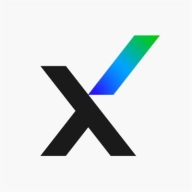

Splunk Enterprise Security and Trellix ESM both compete in the SIEM category, with Splunk having the upper hand due to its advanced features and broader integration capabilities.
Features: Splunk Enterprise Security offers rich customization options, scalability, and seamless integration with diverse data sources. It also provides advanced machine learning and rapid data querying. Trellix ESM is cost-effective and user-friendly for smaller environments, with robust log management and basic SIEM features making it ideal for companies with straightforward monitoring needs.
Room for Improvement: Splunk Enterprise Security faces criticism for its high cost, complex pricing, and steep learning curve. Enhancements in UI, deployment complexity, and search functionalities are desired. Improved integration and visualization options are also sought. Trellix ESM needs better integration with SaaS solutions and a clearer UI. Alert customization and case management capabilities could be enhanced.
Ease of Deployment and Customer Service: Splunk offers flexible deployment options including on-premises and various cloud environments but requires skilled resources for setup. Customer service varies, with inconsistent expertise reported. Trellix ESM offers easier deployment and is more favorable in cost for straightforward setups. Its customer service is generally well-regarded, though improvements in resolving complex issues are needed.
Pricing and ROI: Splunk's pricing reflects its extensive feature set, which can be expensive for some businesses. Its ROI is realized through enhanced data insights in large ecosystems. Trellix ESM offers a competitive price point suitable for smaller businesses, delivering value through efficient log management and security monitoring at a lower cost, though its ROI may not match Splunk in advanced analytics environments.
Splunk's cost is justified for large environments with extensive assets.
If you want to write your own correlation rules, it is very difficult to do, and you need Splunk's support to write new correlation rules for the SIEM tool.
The technical support for Splunk met my expectations.
It is easy to scale.
They struggle a bit with pure virtual environments, but in terms of how much they can handle, it is pretty good.
It provides a stable environment but needs to integrate with ITSM platforms to achieve better visibility.
It is very stable.
Splunk Enterprise Security would benefit from a more robust rule engine to reduce false positives.
What Splunk could do better is to create an API to the standard SIEM tools, such as Microsoft Sentinel.
Data retention can be better. If we want to look at the data for five months or six months, that is not available to us. We only have a history of 20 or 30 days.
The platform requires significant financial investment and resources, making it expensive despite its comprehensive features.
I saw clients spend two million dollars a year just feeding data into the Splunk solution.
Splunk is priced higher than other solutions.
This capability is useful for performance monitoring and issue identification.
The Splunk Enterprise Security's threat-hunting capabilities have been particularly useful in later releases.
Splunk Enterprise Security's most valuable features are its stability and the robust Splunk Search Processing Language.


Splunk Enterprise Security is widely used for security operations, including threat detection, incident response, and log monitoring. It centralizes log management, offers security analytics, and ensures compliance, enhancing the overall security posture of organizations.
Companies leverage Splunk Enterprise Security to monitor endpoints, networks, and users, detecting anomalies, brute force attacks, and unauthorized access. They use it for fraud detection, machine learning, and real-time alerts within their SOCs. The platform enhances visibility and correlates data from multiple sources to identify security threats efficiently. Key features include comprehensive dashboards, excellent reporting capabilities, robust log aggregation, and flexible data ingestion. Users appreciate its SIEM capabilities, threat intelligence, risk-based alerting, and correlation searches. Highly scalable and stable, it suits multi-cloud environments, reducing alert volumes and speeding up investigations.
What are the key features?Splunk Enterprise Security is implemented across industries like finance, healthcare, and retail. Financial institutions use it for fraud detection and compliance, while healthcare organizations leverage its capabilities to safeguard patient data. Retailers deploy it to protect customer information and ensure secure transactions.
Make your organization more resilient and confident with Trellix Security Operations. Filter out the noise and cut complexity to deliver faster, more effective SecOps. Integrate your existing security tools and connect with over 650 Trellix solutions and third-party products.
We monitor all Security Information and Event Management (SIEM) reviews to prevent fraudulent reviews and keep review quality high. We do not post reviews by company employees or direct competitors. We validate each review for authenticity via cross-reference with LinkedIn, and personal follow-up with the reviewer when necessary.